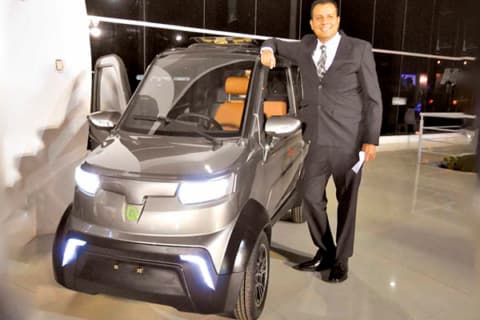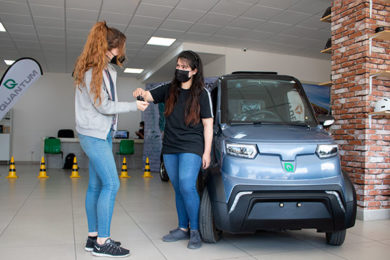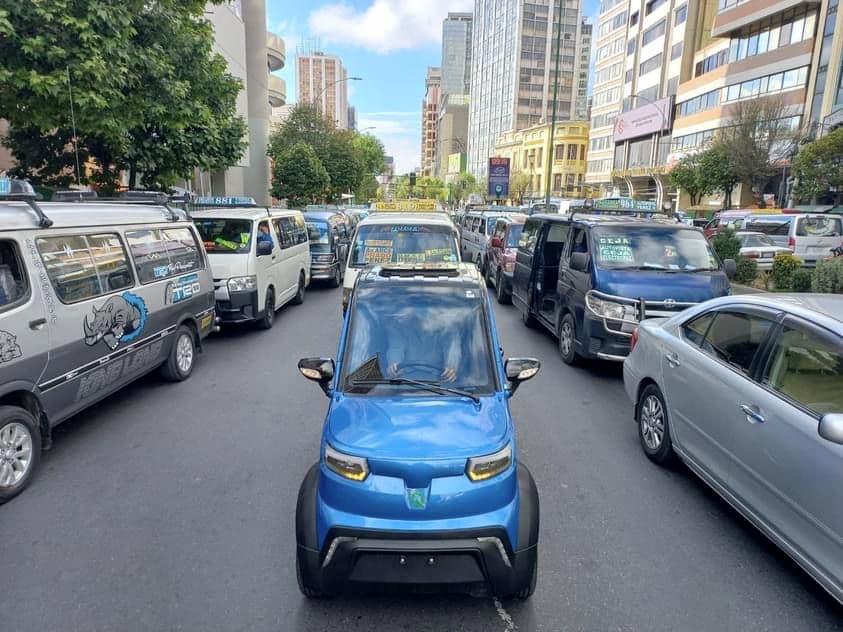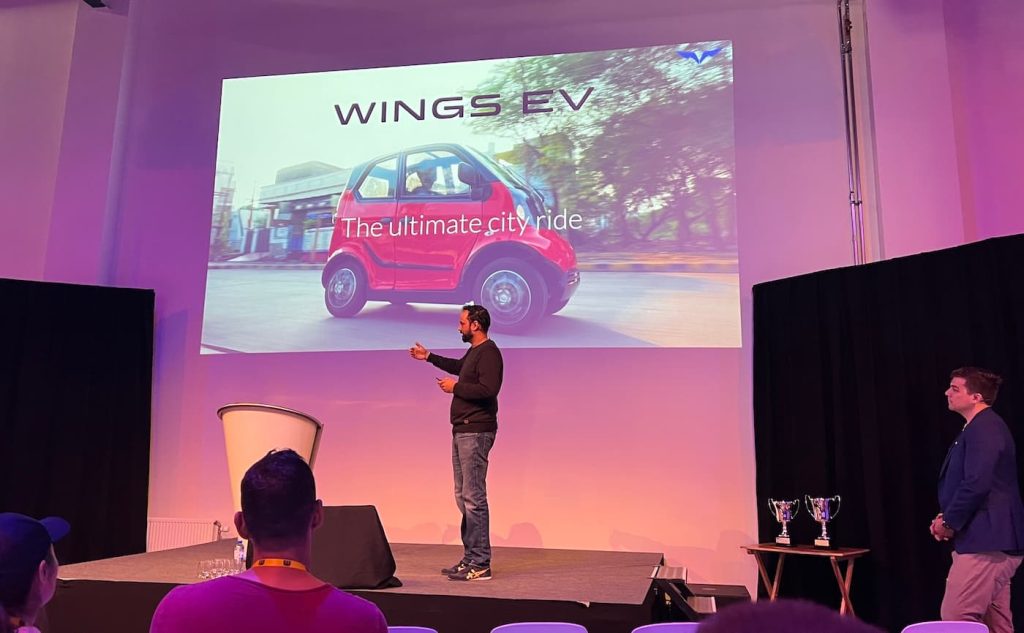Bolivia’s only electric car maker takes a radically different approach
Bolivia only has one electric car manufacturer and it’s hard to compare it to the bigger competition. But that’s likely by design, because La Paz-based Quantum Motors is building tiny electric cars built for just three passengers.
It might seem like a strange move, especially from a country with rich lithium deposits, but Quantum Motors has taken a “less is more” approach.
The company’s cars are roughly the size of a golf cart. That small size means they are designed to achieve the bare necessity of a car: move a few occupants and their things around town.
The Quantum seats its driver and passenger in a tandem configuration and hits a top speed of just 35 mph (56 km/h).
The tiny electric car has a 6.3 kWh lithium-ion battery with enough capacity to offer 50 miles (80 km) of range per charge. It can be recharged at home or on the go from a traditional electrical outlet using Level 1 charging.
The small size and modest range help it achieve an attractive price point of around US $7,500.


A smaller, compact car design like this might sound foreign to many Americans that have seen cars – both combustion-powered and electric – balloon in size over the last decade. But the small stature is actually an advantage in many countries, as Quantum Motors’ general manager José Carlos Márquez explained:
E-mobility will prevail worldwide in the next few years, but it will be different in different countries. Tesla will be a dominant player in the U.S., with its speedy, autonomous cars. But in Latin America, cars will be more compact, because our streets are more similar to those of Bombay and New Delhi than to those of California.
Quantum Motors was founded just four years ago and is still in its early stages. The company has sold 350 cars in its domestic market of Bolivia as well as an undisclosed number in neighboring Peru and Paraguay. But the fledgling automaker is planning to open a factory in Mexico that could help boost its production figures.

Larger EVs have become the norm in North America, but many South American and Asian countries are exploring much smaller options.
We recently saw a similar design from India’s Wings EV, which is developing a tandem electric tiny car that can wiggle through streets as easily as a motorcycle while still offering the enclosed advantages of a passenger car.
Such vehicles may help bridge the gap between smaller two-wheelers and larger cars, especially in countries where electric motorbikes haven’t proven as successful as larger electric cars in North America and Europe have. By leapfrogging combustion-powered motorcycles into small electric tiny cars, commuters can maintain a small footprint yet reap the benefits of weather protection and arguably safer crash protection.
Smaller electric vehicles aren’t unheard of in the US, but the category, usually known as LSVs or NEVs, has yet to see significant growth. Several new manufacturers have recently stepped up with interesting electric microcars designed for the US market though, so things could be changing.

via: AP

Bolivia only has one electric car manufacturer and it’s hard to compare it to the bigger competition. But that’s likely by design, because La Paz-based Quantum Motors is building tiny electric cars built for just three passengers.
It might seem like a strange move, especially from a country with rich lithium deposits, but Quantum Motors has taken a “less is more” approach.
The company’s cars are roughly the size of a golf cart. That small size means they are designed to achieve the bare necessity of a car: move a few occupants and their things around town.
The Quantum seats its driver and passenger in a tandem configuration and hits a top speed of just 35 mph (56 km/h).
The tiny electric car has a 6.3 kWh lithium-ion battery with enough capacity to offer 50 miles (80 km) of range per charge. It can be recharged at home or on the go from a traditional electrical outlet using Level 1 charging.
The small size and modest range help it achieve an attractive price point of around US $7,500.


A smaller, compact car design like this might sound foreign to many Americans that have seen cars – both combustion-powered and electric – balloon in size over the last decade. But the small stature is actually an advantage in many countries, as Quantum Motors’ general manager José Carlos Márquez explained:
E-mobility will prevail worldwide in the next few years, but it will be different in different countries. Tesla will be a dominant player in the U.S., with its speedy, autonomous cars. But in Latin America, cars will be more compact, because our streets are more similar to those of Bombay and New Delhi than to those of California.
Quantum Motors was founded just four years ago and is still in its early stages. The company has sold 350 cars in its domestic market of Bolivia as well as an undisclosed number in neighboring Peru and Paraguay. But the fledgling automaker is planning to open a factory in Mexico that could help boost its production figures.

Larger EVs have become the norm in North America, but many South American and Asian countries are exploring much smaller options.
We recently saw a similar design from India’s Wings EV, which is developing a tandem electric tiny car that can wiggle through streets as easily as a motorcycle while still offering the enclosed advantages of a passenger car.
Such vehicles may help bridge the gap between smaller two-wheelers and larger cars, especially in countries where electric motorbikes haven’t proven as successful as larger electric cars in North America and Europe have. By leapfrogging combustion-powered motorcycles into small electric tiny cars, commuters can maintain a small footprint yet reap the benefits of weather protection and arguably safer crash protection.
Smaller electric vehicles aren’t unheard of in the US, but the category, usually known as LSVs or NEVs, has yet to see significant growth. Several new manufacturers have recently stepped up with interesting electric microcars designed for the US market though, so things could be changing.

via: AP

